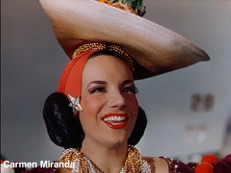This week we had to read about Augusto Sandino, a figure I did not know much about. Thus, I went ahead and investigated a bit about his life and craft a biography of sorts. Here is what I found:
Sandino was a Nicaraguan guerrilla leader who tenaciously fought against the US occupation and intervention until he forced the United States to withdraw his troops from Nicaragua. After his murder at the hands of the then head of the National Guard, Anastasio Somoza, Sandino became the ideological reference of the Sandinista National Liberation Front (FSLN) and the revolution promoted by this movement that, years later, would end the dictatorship somocista. Thus, we’re talking about one of the most central figures of the country of Nicaragua.
Of very humble origin, Augusto Sandino worked as a miner in Nicaragua, Honduras, and Mexico. In 1926 he returned to his country, occupied since 1916 by US troops defending the interests of fruit companies in the United States. He opted to defend national autonomy, affected by the Bryan-Chamorro agreement and the signing of the Stimpson-Moncada treaty, so he assembled a group of guerrillas and raised arms.
For six years Sandino fought against the troops of different governments supported by the United States, at the end of which he had managed to gather around three thousand men around him and had won popular admiration. Organized under his command, the rebel guerrilla took refuge in the jungles of Nueva Segovia, where he became practically invincible.
However, his political prestige continued to be a threat to the country’s leaders, so, after accepting an invitation to go to the presidential palace, he was ambushed and killed by Anastasio Somoza, head of the National Guard and nephew of former President José María Moncada.
However, as per usual, ideas don’t die when the one that starts them dies. The death of the leader did not mean the disappearance of his movement, and his name went on to embody the liberation struggle of Nicaragua. The Sandinista National Liberation Front (FSLN), a political alignment created in 1962, established itself as a continuation of Sandino’s ideology and focused its sights on the overthrow of the Somoza through armed struggle, an objective that he would achieve many years later (in 1979) force the fall of President Anastasio Somoza Debayle, son of Anastasio Somoza.

